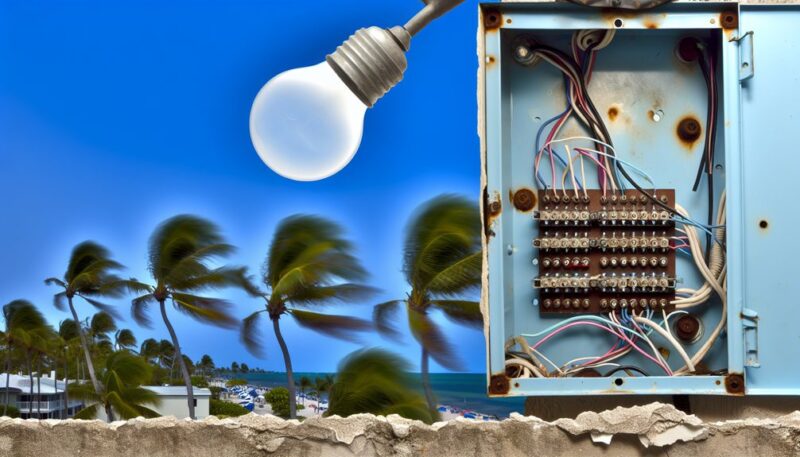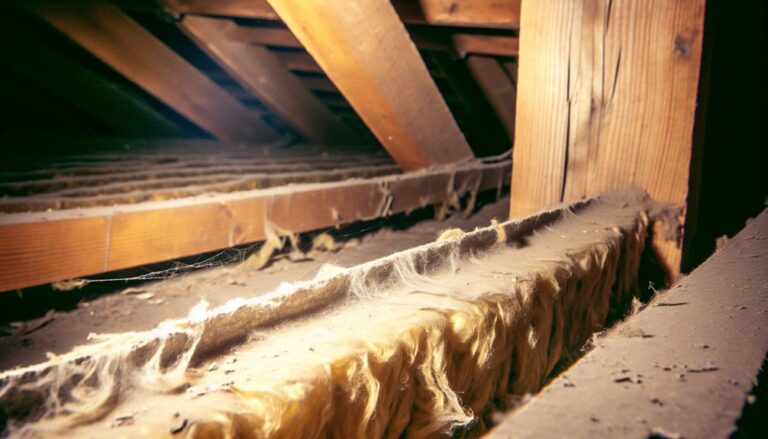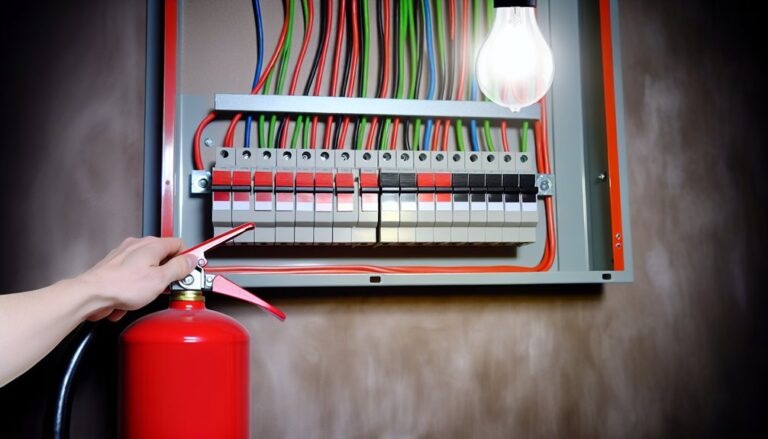Common Electrical Issues in Fort Lauderdale
In Fort Lauderdale, common electrical issues that you might encounter include voltage fluctuations, circuit overloads, flickering lights, electrical surges, and faulty wiring. These problems can disrupt your daily routine and pose potential safety risks. Voltage fluctuations may harm sensitive equipment, while circuit overloads can lead to tripped breakers or fires. It’s essential to stay alert and recognize these issues early. Discovering their causes and solutions can help guarantee your electrical system remains safe and efficient.
Key Takeaways
- Fort Lauderdale experiences voltage fluctuations due to faulty wiring and utility supply issues, impacting equipment lifespan.
- Circuit overloads are common as high-demand appliances often run simultaneously, risking tripped breakers and electrical fires.
- Flickering lights may indicate loose connections or overloaded circuits, necessitating inspection and load redistribution.
- Electrical surges can damage sensitive electronics; installing surge protection devices is crucial for safeguarding equipment.
- Regular inspections for faulty wiring are essential to prevent hazards, as frayed insulation can lead to serious electrical problems.
Understanding Voltage Fluctuations
When you experience voltage fluctuations in your electrical system, it’s crucial to understand their implications on your devices and overall safety.
Voltage regulation is critical in maintaining a consistent power supply. Fluctuations can lead to equipment damage, reducing lifespan, or even causing immediate failure.
Performing electrical diagnostics helps identify the root causes of these fluctuations, which may include faulty wiring, improper load distribution, or issues with your utility supply.
By analyzing voltage levels, you can determine if your system is functioning correctly or if intervention is necessary.
Regular monitoring and maintenance can prevent severe complications, ensuring your devices operate efficiently and safely.
Don’t underestimate the importance of addressing voltage fluctuations promptly to safeguard your electrical investments.
Navigating Circuit Overloads
Although circuit overloads can occur for various reasons, they often stem from exceeding the capacity of your electrical system.
When you plug in too many devices, the demand for electricity surpasses the limits set by your circuit breakers. This can lead to tripped breakers or, in severe cases, electrical fires.
To prevent overloads, implement effective load management strategies. Identify which circuits support high-demand appliances and avoid using them simultaneously.
Regularly assess your electrical setup to verify it’s equipped to handle your needs. If you frequently experience circuit overloads, consider upgrading your electrical panel or consulting a licensed electrician for a professional evaluation.
Taking these steps will help maintain safety and functionality in your home’s electrical system.
Dealing With Flickering Lights
Flickering lights can signal underlying electrical issues that warrant attention. The causes of flickering often include loose connections, faulty bulbs, or circuit overloads.
When you experience flickering, first check if the bulb is securely fitted and functioning. If it’s not the bulb, inspect your wiring connections for any signs of wear or damage.
It’s essential to make certain that your circuit isn’t overloaded; too many devices on one circuit can lead to flickering.
Solutions to flickering include tightening loose connections, replacing faulty bulbs, or redistributing electrical loads across circuits.
If these steps don’t resolve the issue, it’s best to consult a qualified electrician to investigate further and make certain your electrical system remains safe and efficient.
Addressing Electrical Surges
Electrical surges can pose a significant threat to your devices and the overall stability of your electrical system. These sudden increases in voltage can damage sensitive electronics, leading to costly repairs or replacements.
To safeguard your equipment, it’s essential to invest in surge protection devices. These act as a barrier, absorbing excess voltage and preventing it from reaching your appliances.
Additionally, you should consider using voltage stabilizers, which help maintain a consistent voltage level, reducing the risk of surges. Regularly check and maintain these devices to guarantee peak performance.
Recognizing Faulty Wiring
Surge protection is just one aspect of maintaining a safe electrical system; recognizing faulty wiring is equally important.
You should regularly inspect your wiring for signs of damage, such as frayed or deteriorating wire insulation. If the insulation is cracked or peeling, it can expose the wires, leading to potential hazards.
Pay attention to wiring colors; different colors indicate specific functions, like black for hot wires and white for neutral. If you notice any mismatched or improperly connected colors, it could signal an installation error.
Additionally, any unusual heat or burning smells from outlets or switches are red flags. Addressing faulty wiring promptly guarantees safety and prevents costly repairs down the line.
Always consult a licensed electrician for thorough inspections.
Identifying Ground Faults
While you mightn’t always notice them, ground faults can pose significant risks to your safety and property. A ground fault occurs when electricity unintentionally travels through an unintended path, often due to damaged insulation or moisture.
To identify these faults, you can perform circuit testing using a ground fault circuit interrupter (GFCI) or a multimeter. Start by checking GFCI outlets; if they trip frequently, it’s a sign of a potential ground fault. Additionally, inspect your wiring for any signs of wear or damage.
Regular circuit testing not only helps in identifying faults but also guarantees the electrical system’s integrity. Remember, addressing ground faults promptly can prevent electrical hazards and costly repairs.
Managing Power Outages
When a power outage strikes, knowing how to manage the situation effectively can minimize disruption and keep your home safe.
Start by checking your emergency preparedness kit, confirming you have flashlights, batteries, and non-perishable food. Keep your phone charged and consider investing in a portable charger.
Maintain utility communication by contacting your provider to report the outage and receive updates. If it’s safe, locate your circuit breaker and turn off appliances to prevent surges when power returns.
Avoid opening the refrigerator or freezer to preserve food. Remember to stay informed through local news or social media for updates.
Preventing Water Damage to Electrical Systems
To prevent water damage to electrical systems, it’s crucial to address potential vulnerabilities in your home.
Start by implementing waterproofing techniques around areas prone to moisture intrusion, such as basements and crawl spaces. Installing moisture barriers can effectively shield electrical components from humidity and water exposure, reducing the risk of short circuits and corrosion.
Verify electrical outlets in wet areas, like bathrooms and kitchens, are equipped with ground fault circuit interrupters (GFCIs) to prevent electrical shock.
Regularly inspect your home’s exterior for cracks and gaps where water might seep in, and repair any issues promptly.
Inspecting Aging Electrical Panels
As electrical systems age, it’s vital to regularly inspect their panels to guarantee safety and functionality.
Start by checking for panel corrosion, which can indicate moisture infiltration or oxidation, compromising the panel’s integrity.
Look for signs of overheating, such as discoloration or a burnt smell, which can signal a need for immediate attention.
If your panel is outdated or showing wear, consider panel upgrades to enhance capacity and efficiency. Upgrading can also improve safety features, reducing the risk of electrical fires or failures.
Regular inspections not only prolong the lifespan of your electrical system but also assure compliance with current safety standards.
Don’t overlook this essential maintenance task; it’s key to a safe and reliable electrical environment.
Ensuring Proper Grounding and Bonding
Proper grounding and bonding are essential components of a safe electrical system. To guarantee your electrical setup complies with safety standards, you must implement effective grounding techniques.
Begin by installing ground rods or plates, making certain they’re driven deep into the earth to achieve a low-resistance path. Use adequate bonding materials, such as copper or aluminum wire, to connect all metallic parts, including pipes and enclosures, preventing hazardous voltage differences.
Regularly inspect these connections for corrosion or damage, as deterioration can compromise your system’s integrity.
Remember, a well-grounded and bonded system not only protects your equipment but also enhances overall safety, reducing the risk of electrical shock and fire hazards in your Fort Lauderdale home.
Prioritize these practices for peace of mind.
About Us
We understand that electrical issues can be stressful and overwhelming. That’s why we are here to lend a helping hand and provide you with the best electrical services in town. As a team of experienced electricians, we take pride in our ability to solve any electrical problem with precision and care.
Pages
Follow us
© 2025 By Electrician Fort Lauderdale Today








